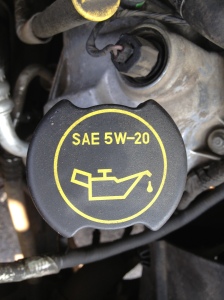On the go? No problem! Listen to our blog here!
 Everyone has seen the “W” on bottles of motor oil and in fact, people usually request or shop for motor oil by name: 10W-30, 10W-40, etc. But very few people actually know what that “W” stands for and why it is so
Everyone has seen the “W” on bottles of motor oil and in fact, people usually request or shop for motor oil by name: 10W-30, 10W-40, etc. But very few people actually know what that “W” stands for and why it is so
important. So let me enlighten you fine ladies and gentlemen. The “W” on motor oil labels stands for…. drum roll please…. Winter. Whaaaaat? I know, not that exciting, is it? But it is important. And here’s why.
Oil weight, or the oil viscosity, refers to how thick or thin the oil is. Temperature affects the flow of oil in the same way it affects the flow of other liquids. Think about it. If you took cooking oil and stuck it in your freezer, it would begin to thicken and solidify.
The same thing happens with motor oil. The thinner the oil is, the easier it will flow through the engine. When it’s cold, the oil naturally becomes thicker. In order to maintain a healthy engine, the oil needs to flow through it with ease. This means engines need oil that is thin enough for cold starts and thick enough when the engine is hot. An oil is rated by the SAE* for viscosity by heating it to a specified temperature and then allowing it to flow out of a specifically sized hole. Its viscosity rating is determined by the length of time it takes to flow out of the hole. If it flows quickly, it gets a low rating. If it flows slowly, it gets a high rating.
Oils meeting the SAE’s low temperature requirements have a “W” after the viscosity rating (example: 10W), and oils that meet the high ratings have no letter (example SAE 30). Before you select a motor oil for your vehicle, check your owner’s manual and see which one is recommended. Then look to see which motor oil will maintain fluidity in your particular climate and season.
Mechanically yours,
Audra
*(SAE) Society of Automotive Engineers- the premiere world resource for the design, manufacturing, operation, and maintenance of automobiles, among other modes of transportation too
